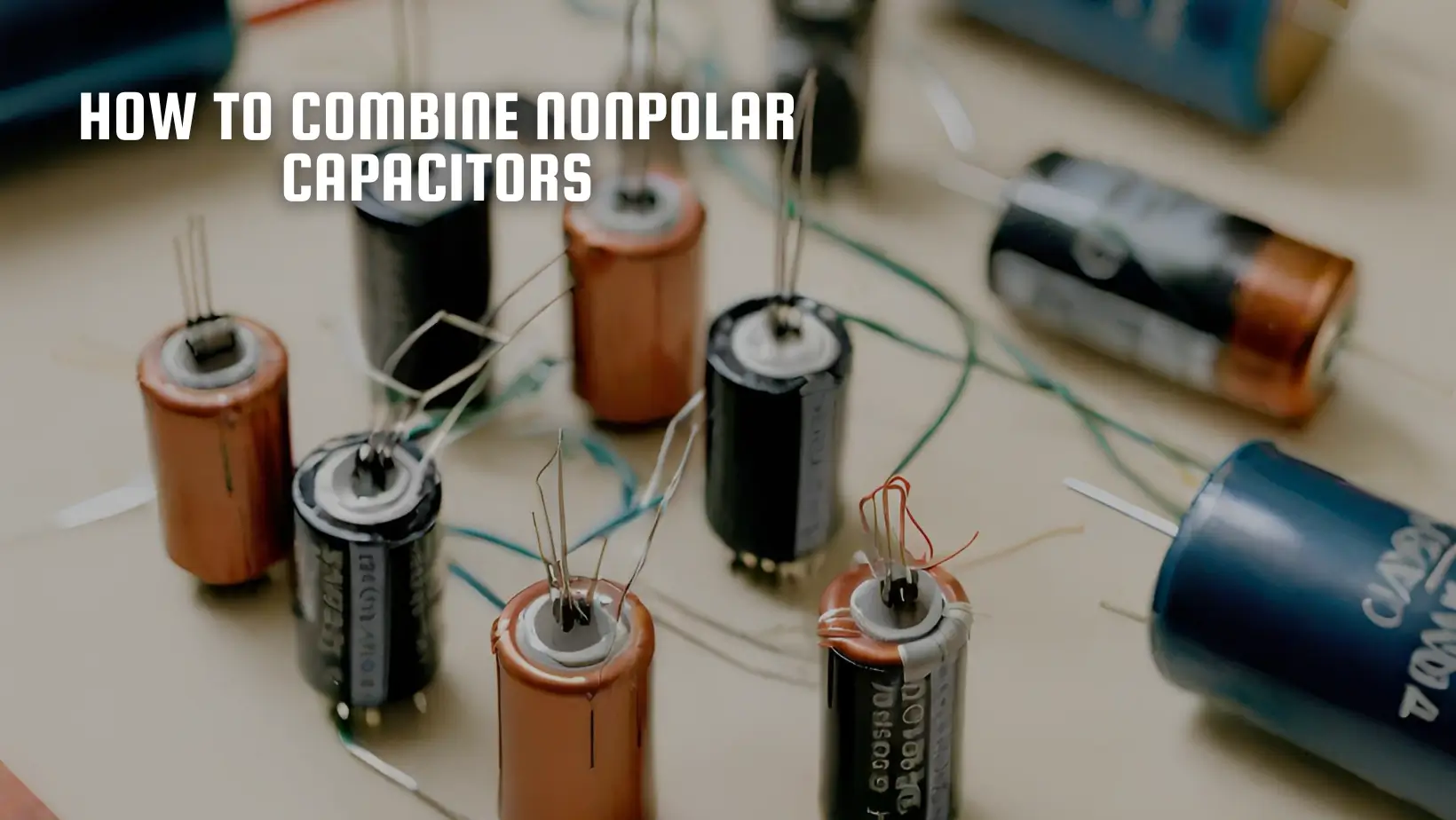Capacitors, electronic components with a crucial role in storing and releasing electrical energy, are pivotal in the realm of electronics. Comprising two conductive plates separated by a dielectric material, capacitors operate based on their capacitance, determining their capacity to store electrical charge. Higher capacitance equates to an increased ability to store charge efficiently.
The utility of capacitors spans across a spectrum of applications, underscoring their significance in electronics. They are extensively employed in smoothing power supplies, filtering signals, regulating timing in circuits, and functioning as indispensable building blocks in electronic devices such as amplifiers and oscillators. The versatility of capacitors makes them indispensable components, ensuring the seamless operation of electronic systems worldwide.

When combining nonpolar capacitors, it is essential to consider their capacitance values, voltage ratings, and construction types to ensure proper functionality and safety. Here are some guidelines on how to properly combine nonpolar capacitors.
When combining nonpolar capacitors, you can typically add their capacitance values together to get the total capacitance. For instance, if you connect a 10μF capacitor in parallel with a 20μF capacitor, the total capacitance would be 30μF.
It is crucial to ensure that the combined voltage rating of the capacitors is sufficient for the circuit requirements. The voltage across the capacitors should not exceed the rated voltage of the individual capacitors to prevent damage or failure.
Nonpolar capacitors come in various types, such as ceramic, film, and electrolytic capacitors. Make sure to combine capacitors of the same type to maintain the desired performance characteristics and avoid unexpected behavior.
Unlike polar capacitors, nonpolar capacitors do not have a strict polarity orientation. This makes it easier to connect them in parallel or series configurations without worrying about the polarity.
Consider the ESR of the capacitors when combining them, especially in high-frequency applications. The total ESR of the combined capacitors will affect the overall performance of the circuit.
Nonpolar capacitors can be sensitive to temperature variations and operating conditions. Ensure that the combined capacitors are suitable for the intended environment to maintain reliability.
By following these guidelines, you can effectively combine nonpolar capacitors to meet your circuit requirements and ensure proper functionality. Remember to double-check the specifications and characteristics of the capacitors before combining them to avoid any issues.
When dealing with nonpolar capacitors, there comes a time when combining them either in series or parallel can be advantageous. Understanding how to correctly combine them can lead to enhanced overall capacitance in a circuit setup. Let's delve into the two methods of connection:
In a series connection, capacitors are strategically linked end-to-end. To calculate the total capacitance (\(C_{\text{total}}\)) in a series arrangement, one must consider the reciprocal of each individual capacitance. The formula for calculating total capacitance is:
\[ \frac{1}{C_{\text{total}}} = \frac{1}{C_1} + \frac{1}{C_2} + \frac{1}{C_3} + \ldots \]
Ensure that the positive terminal of the first capacitor is connected to the negative terminal of the second capacitor, maintaining this pattern until all capacitors are connected. By following this method, the remaining free terminals will constitute the overall positive and negative terminals.
In parallel connection, nonpolar capacitors are joined such that all positive terminals are linked together, as well as all negative terminals. To calculate the total capacitance (\(C_{\text{total}}\)) in a parallel configuration, simply add up the individual capacitances of the capacitors. The formula for determining total capacitance is:
\[ C_{\text{total}} = C_1 + C_2 + C_3 + \ldots \]
By correctly combining nonpolar capacitors in parallel, the collective positive and negative terminals serve as the overall positive and negative terminals for the circuit, respectively. This method allows for an increased capacitance level that can aid in achieving desired performance outcomes.
Integrating capacitors in series or parallel configurations can play a crucial role in optimizing circuit designs and enhancing performance. Choose the appropriate connection method based on your specific requirements to maximize the efficiency and functionality of your circuit setup.